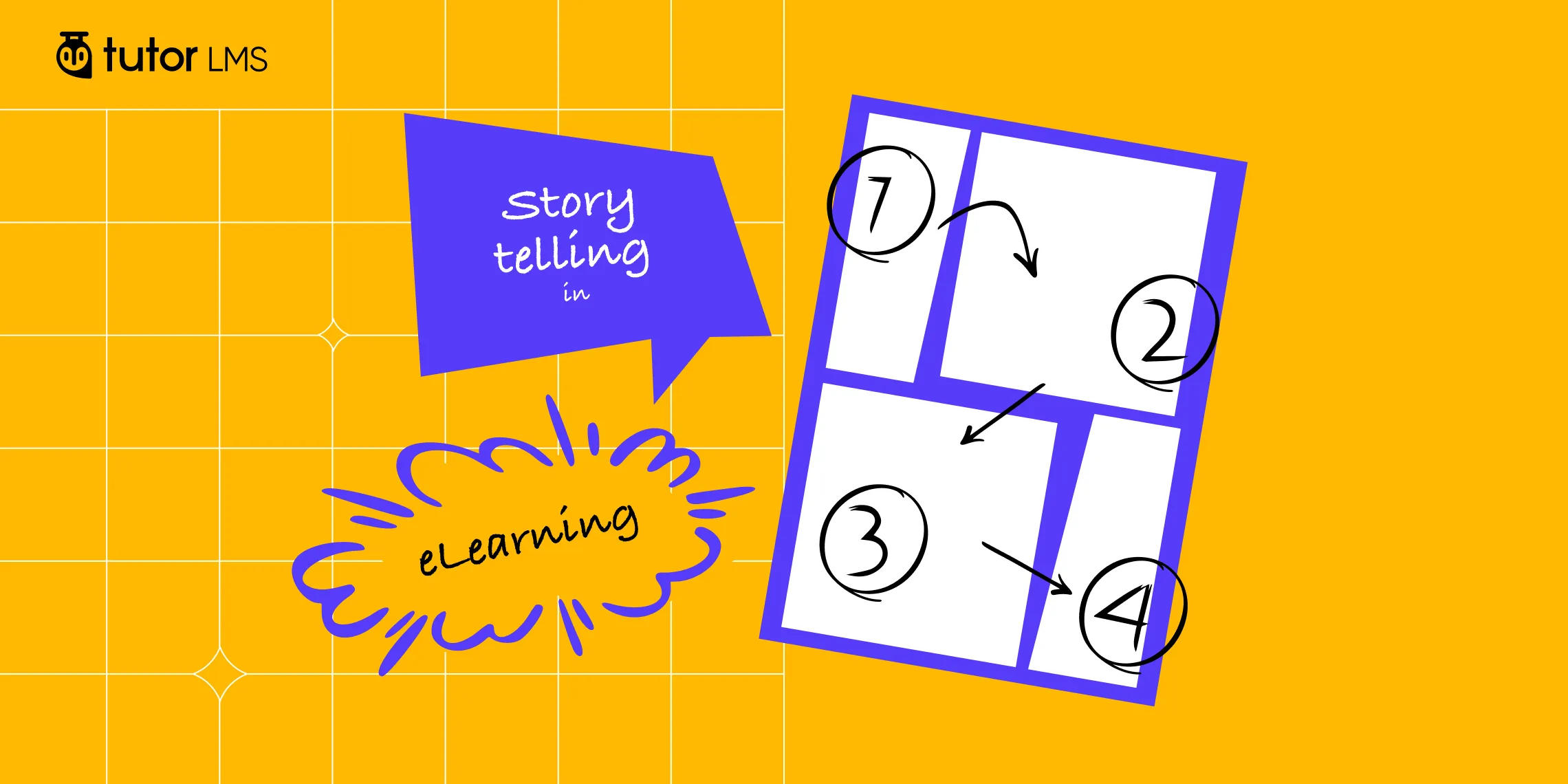Let’s be honest, traditional online courses can sometimes feel a bit…dry. Rows of text, bland videos, and multiple-choice quizzes are hardly the stuff that dreams (or engaged students) are made of. But what if I told you there’s a simple way to breathe new life into your online lessons? The secret ingredient? Storytelling!
Storytelling is the art of weaving compelling narratives that captivate your audience. And when you apply this technique to online education, it can work wonders. You see, stories have a unique power. They help us connect on an emotional level, remember information better, and stay motivated to keep learning. Traditional online courses often miss that personal touch, leaving students feeling isolated and uninspired.
Ready to captivate your audience and create unforgettable learning experiences? It’s time to unlock the magic of storytelling!
The Power of Storytelling in Online Learning
Think about the best teachers you’ve ever had. Did they just recite facts, or did they tell stories that drew you in? Great stories have a way of sticking with us, and that power works in online learning too!
A good story sticks with you. It sparks curiosity, gets you excited, and maybe even makes you a little frustrated when a character messes up. That’s because stories tap into our emotions, making us way more invested in the lesson.
Here’s why storytelling matters in eLearning:
- Enhances Engagement: A good story pulls learners in and makes them want to know what happens next. When learners are hooked, they’re more likely to pay attention and actually absorb the information.
- Facilitates Understanding: Instead of just presenting dry facts, stories help learners connect with the material on a deeper level. By putting information into a real-world context, even complex ideas become easier to grasp.
- Promotes Retention: Ever noticed how easy it is to remember a good story? That’s because stories create vivid mental images and tap into our emotions. This makes the information way more memorable than just reading bullet points.
- Encourages Critical Thinking: Stories are full of challenges, decisions, and consequences. This naturally encourages learners to think critically, analyze situations, and come up with their own solutions.
Challenges of Integrating Storytelling in Online Courses
As incredible as it sounds, making your online courses more appealing with stories takes effort. It’s not just about slapping a random anecdote at the start of every lesson. Here are a few honest challenges you might face:
- Time Crunch: Crafting compelling narratives that seamlessly integrate with your course content takes time and planning. Not everyone has hours to spare, especially when juggling other course development tasks.
- Storyteller’s Block: Finding stories that are relevant, interesting, and the right length can feel like searching for buried treasure.
- Staying on Target: It’s easy to get carried away with a captivating story, but does it actually help learners achieve the learning objectives? Making sure your story has a purpose is key.
But don’t worry! The good news is, with practice, this gets way easier. Plus, there are resources and tricks to help you overcome these hurdles.
How to Incorporate Storytelling in eLearning with Tutor LMS
Want to create online courses that learners actually enjoy? Tutor LMS, a top WordPress plugin, can help! Let’s explore how you can use storytelling to make your eLearning content more engaging and effective.
Let’s use a small workplace safety training course as an example to demonstrate the process of storytelling in Tutor LMS. So imagine a workplace safety course that’s not just a list of rules, but an engaging story starring “Emily,” your relatable guide to office hazards. With Tutor LMS, you can turn those dusty safety manuals into an interactive adventure!
1. Build Your Story, Chapter by Chapter
Just like a good book or movie, your eLearning story needs a captivating plot to keep learners hooked. Think of it like this:
- The Hook: Start with a problem or challenge that grabs learners’ attention. Maybe Emily, our workplace safety hero, just started a new job and is totally clueless about office hazards.
- Rising Action: Guide learners through Emily’s journey as she faces different challenges. Each module becomes a chapter in her story, building suspense and excitement.
- Climax: Things heat up! Emily faces a major safety crisis – maybe a fire breaks out, or someone gets injured. This is where learners really see the importance of what they’re learning.
- Resolution: Emily uses her newfound knowledge to save the day! This satisfying ending reinforces the learning objectives and leaves learners feeling empowered.
Tutor LMS Tip: Use the course builder to structure your lessons around this plot arc. Each module can focus on a specific stage of Emily’s journey, keeping learners engaged and invested in her success.
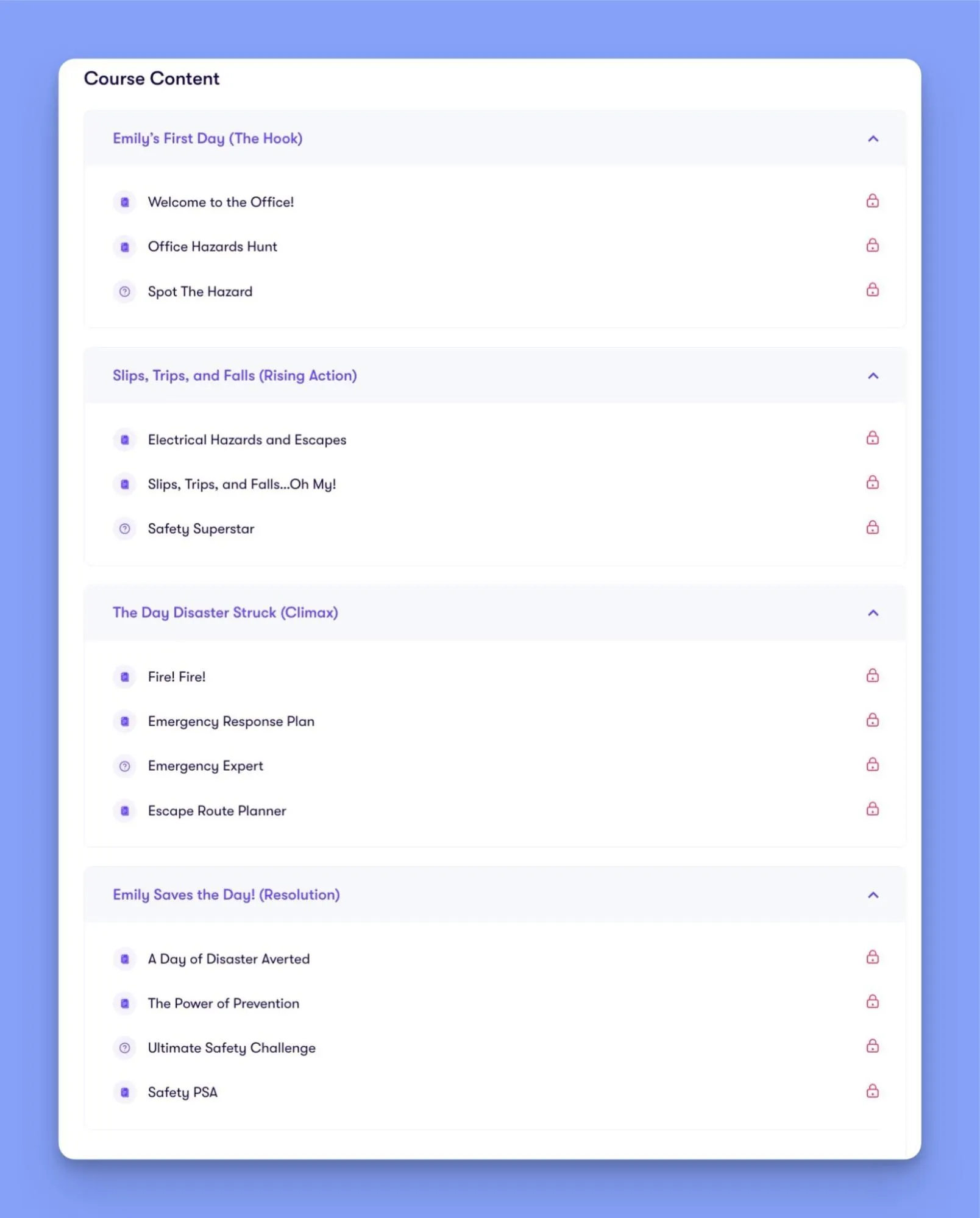
2. Bring Your Story to Life with Multimedia
Words are powerful, but visuals and audio can take your storytelling to the next level! Add images, animations, and background music to create an immersive learning environment that truly engages your learners.
Tutor LMS Tip: Easily embed videos and audio clips within your lessons using Tutor LMS advanced course builder. A well-placed video can demonstrate a concept, add emotional depth, or provide a welcome break from text.
Here are some ideas for using multimedia in your eLearning course:
- Images: Use images to illustrate concepts, break up text, and add visual interest.
- Videos: Use videos to demonstrate procedures, show real-world examples, and bring your story to life.
- Audio: Use audio to add narration, music, and sound effects.
By using multimedia effectively, you can create eLearning courses that are more engaging, informative, and memorable.
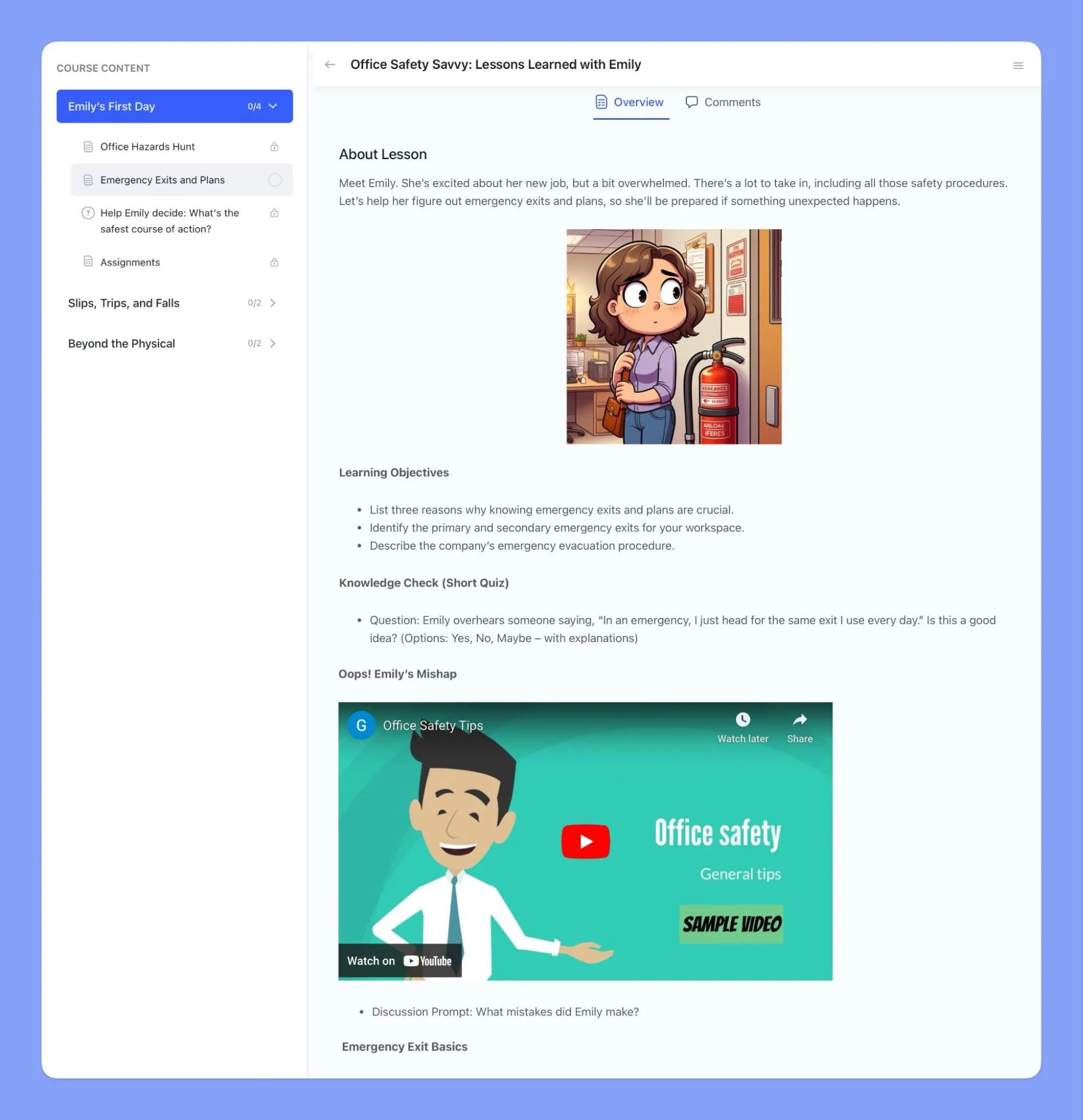
3. Incorporate Real-World Scenarios
Want to create eLearning that truly sticks? Make it relatable! Ground your stories in real-world scenarios that resonate with your learners’ experiences. Think case studies, relatable anecdotes, or even “a day in the life” examples that mirror the challenges and triumphs your learners face daily.
Tutor LMS Tip: Design modules that focus on practical applications of the concepts. Tutor LMS makes it easy to bring real-world scenarios to life!
Here’s how Tutor LMS can help you bring in the “real world”:
- Assignments: Use the assignment feature to create tasks that challenge learners to apply course concepts to their own work lives.
- Video Storytelling: Use Tutor LMS’s seamless video integration to showcase real-life situations.
- Interactive Storytelling: Use Tutor LMS’s quizzing features to create scenarios where learners make choices that affect the outcome of the story. Imagine a workplace safety course where learners must decide how “Emily” should react to different hazards.
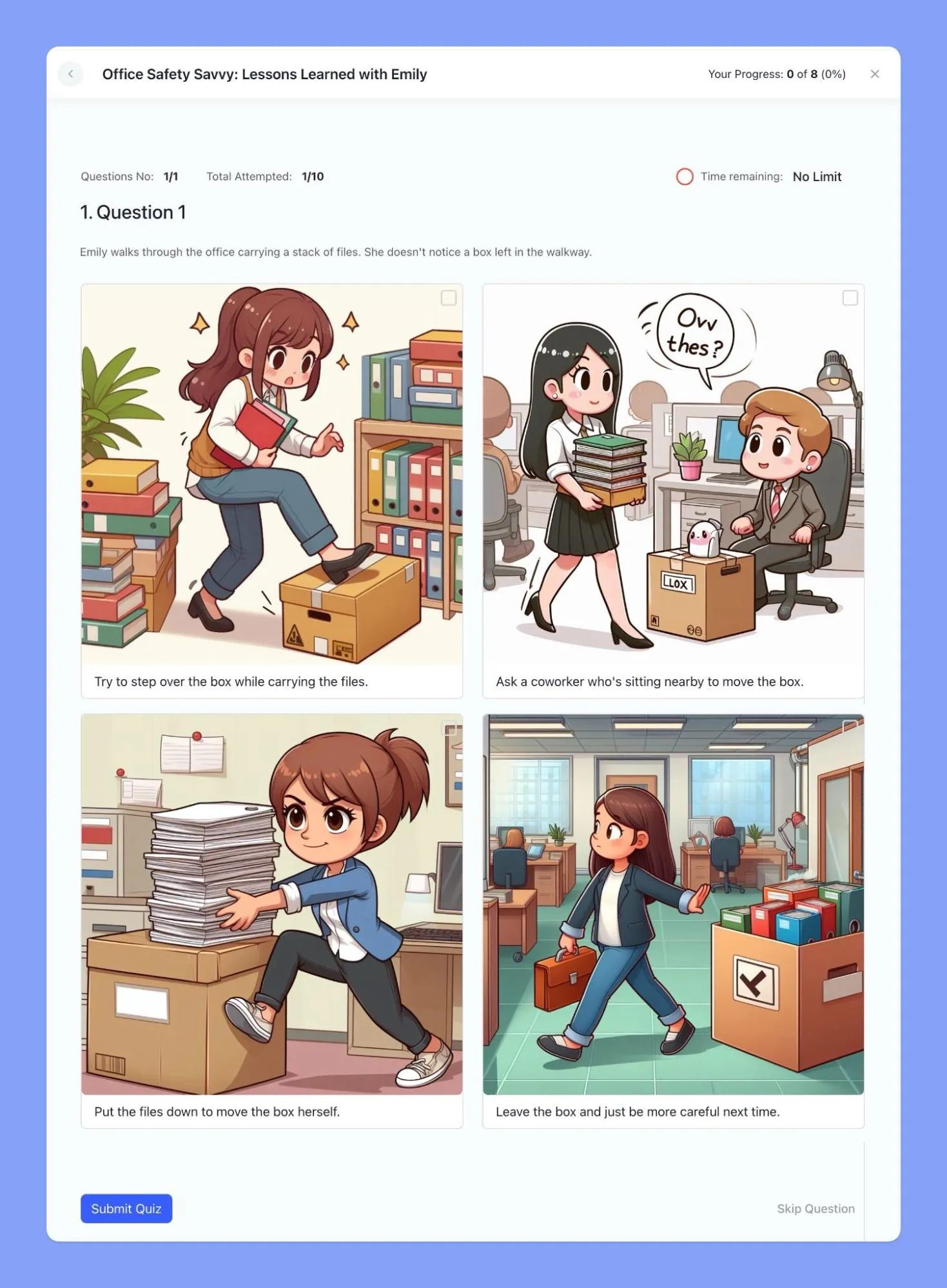
By connecting your eLearning to the real world, you’ll make it more engaging, relevant, and memorable for your learners.
5. Foster Interaction and Collaboration
Storytelling doesn’t have to be a one-way street! Encourage learners to interact with each other and contribute to the narrative. This creates a more dynamic and engaging learning experience, fostering a sense of community and allowing for diverse perspectives.
Tutor LMS Tip: Tutor LMS offers a variety of tools to spark collaboration and make your eLearning stories come alive:
- Dynamic Discussions: Use Tutor LMS’s discussion forums to create a space where learners can:
- Share their thoughts and reactions to different parts of the story.
- Discuss how they would have responded to different challenges faced by the characters.
- Debate different perspectives and interpretations of the narrative.
- Offer suggestions for how the story could unfold or how different challenges could be resolved.
- Q&A and Live Sessions: Use Tutor LMS’s live class feature to host interactive Q&A sessions with your learners. This provides a platform for real-time discussions and allows learners to engage with you and each other on a deeper level.
By fostering interaction and collaboration, you’ll create a richer and more memorable learning experience. Learners will not only absorb the course content but also develop valuable communication, critical thinking, and teamwork skills.
5. Listen to Your Audience: Collect Feedback and Fine-Tune Your Story
Even the best storytellers need feedback! Once you’ve woven your narrative magic into your eLearning courses, it’s crucial to gather insights from your learners. This helps you understand what’s working, what’s not, and how you can make your stories even more engaging and effective.
Tutor LMS Tip: Tutor LMS offers powerful tools to help you collect and analyze learner feedback:
- Course Ratings and Reviews: Encourage learners to rate your courses and leave reviews. This provides valuable overall feedback on the learning experience, including the effectiveness of your storytelling.
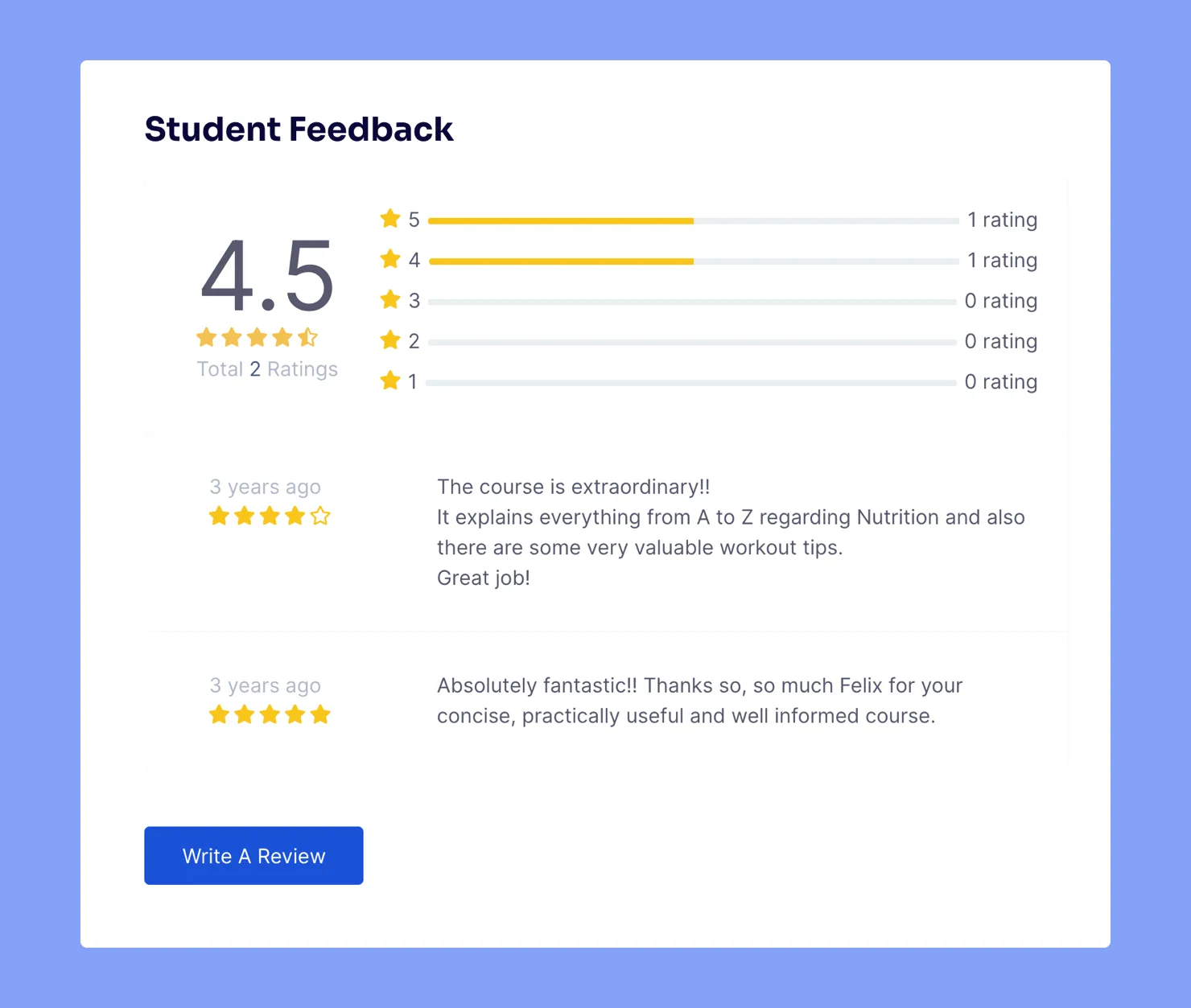
- Analytics Dashboard: Tutor LMS’s analytics dashboard provides valuable data on learner progress and engagement. Track quiz scores, assignment completion rates, and forum participation to identify areas where learners might be struggling or disengaging. This can provide indirect feedback on the effectiveness of your storytelling.
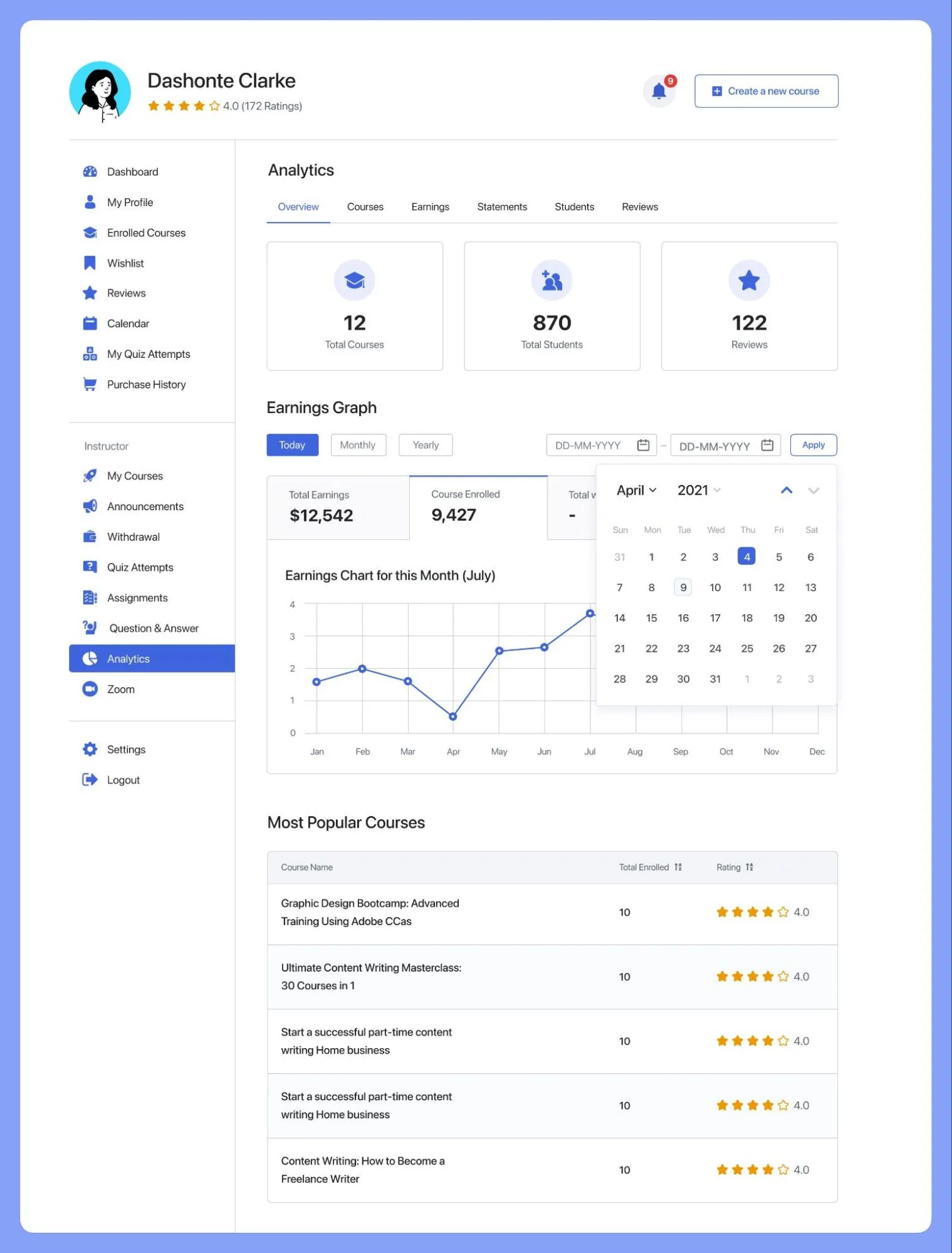
By actively collecting and analyzing feedback, you can continuously refine your storytelling approach and create eLearning experiences that truly resonate with your audience.
The End… Or Is It? The Journey of Storytelling Continues
So, there you have it! We’ve explored the power of storytelling in eLearning and how Tutor LMS can help you weave captivating narratives into your courses. From crafting compelling plots to using multimedia and fostering collaboration, you now have a toolbox of strategies to transform your eLearning from dull to dazzling.
But the journey doesn’t end here. The beauty of storytelling is that it’s an ever-evolving art. As you continue to experiment with different techniques and gather feedback from your learners, you’ll hone your skills and discover new ways to engage and inspire your audience.
Table of Contents
- The Power of Storytelling in Online Learning
- Challenges of Integrating Storytelling in Online Courses
- How to Incorporate Storytelling in eLearning with Tutor LMS
- 1. Build Your Story, Chapter by Chapter
- 2. Bring Your Story to Life with Multimedia
- 3. Incorporate Real-World Scenarios
- 5. Foster Interaction and Collaboration
- 5. Listen to Your Audience: Collect Feedback and Fine-Tune Your Story
- The End... Or Is It? The Journey of Storytelling Continues
Start Using Tutor LMS Today
Ready to take your online courses to new heights? Download Tutor LMS now and enjoy a journey of eLearning excellence.
